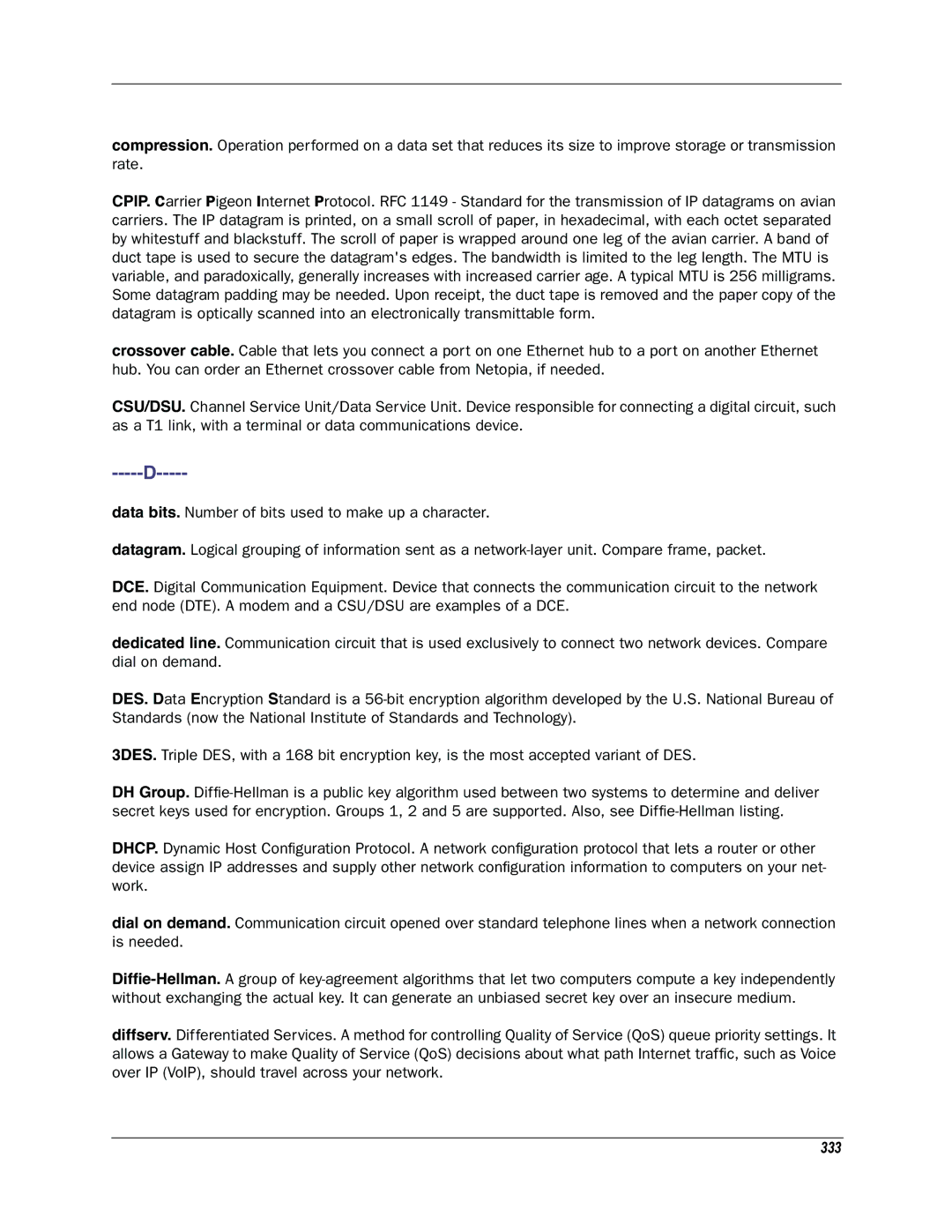
compression. Operation performed on a data set that reduces its size to improve storage or transmission rate.
CPIP. Carrier Pigeon Internet Protocol. RFC 1149 - Standard for the transmission of IP datagrams on avian carriers. The IP datagram is printed, on a small scroll of paper, in hexadecimal, with each octet separated by whitestuff and blackstuff. The scroll of paper is wrapped around one leg of the avian carrier. A band of duct tape is used to secure the datagram's edges. The bandwidth is limited to the leg length. The MTU is variable, and paradoxically, generally increases with increased carrier age. A typical MTU is 256 milligrams. Some datagram padding may be needed. Upon receipt, the duct tape is removed and the paper copy of the datagram is optically scanned into an electronically transmittable form.
crossover cable. Cable that lets you connect a port on one Ethernet hub to a port on another Ethernet hub. You can order an Ethernet crossover cable from Netopia, if needed.
CSU/DSU. Channel Service Unit/Data Service Unit. Device responsible for connecting a digital circuit, such as a T1 link, with a terminal or data communications device.
data bits. Number of bits used to make up a character.
datagram. Logical grouping of information sent as a
DCE. Digital Communication Equipment. Device that connects the communication circuit to the network end node (DTE). A modem and a CSU/DSU are examples of a DCE.
dedicated line. Communication circuit that is used exclusively to connect two network devices. Compare dial on demand.
DES. Data Encryption Standard is a
3DES. Triple DES, with a 168 bit encryption key, is the most accepted variant of DES.
DH Group.
DHCP. Dynamic Host Configuration Protocol. A network configuration protocol that lets a router or other device assign IP addresses and supply other network configuration information to computers on your net- work.
dial on demand. Communication circuit opened over standard telephone lines when a network connection is needed.
diffserv. Differentiated Services. A method for controlling Quality of Service (QoS) queue priority settings. It allows a Gateway to make Quality of Service (QoS) decisions about what path Internet traffic, such as Voice over IP (VoIP), should travel across your network.
